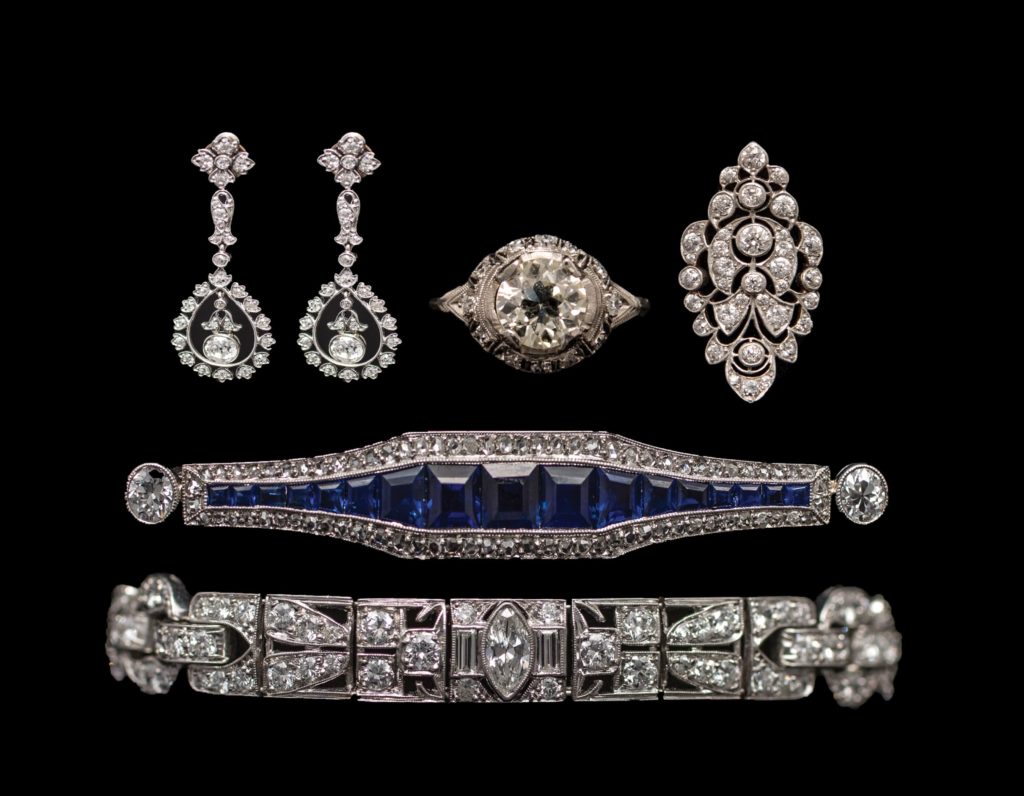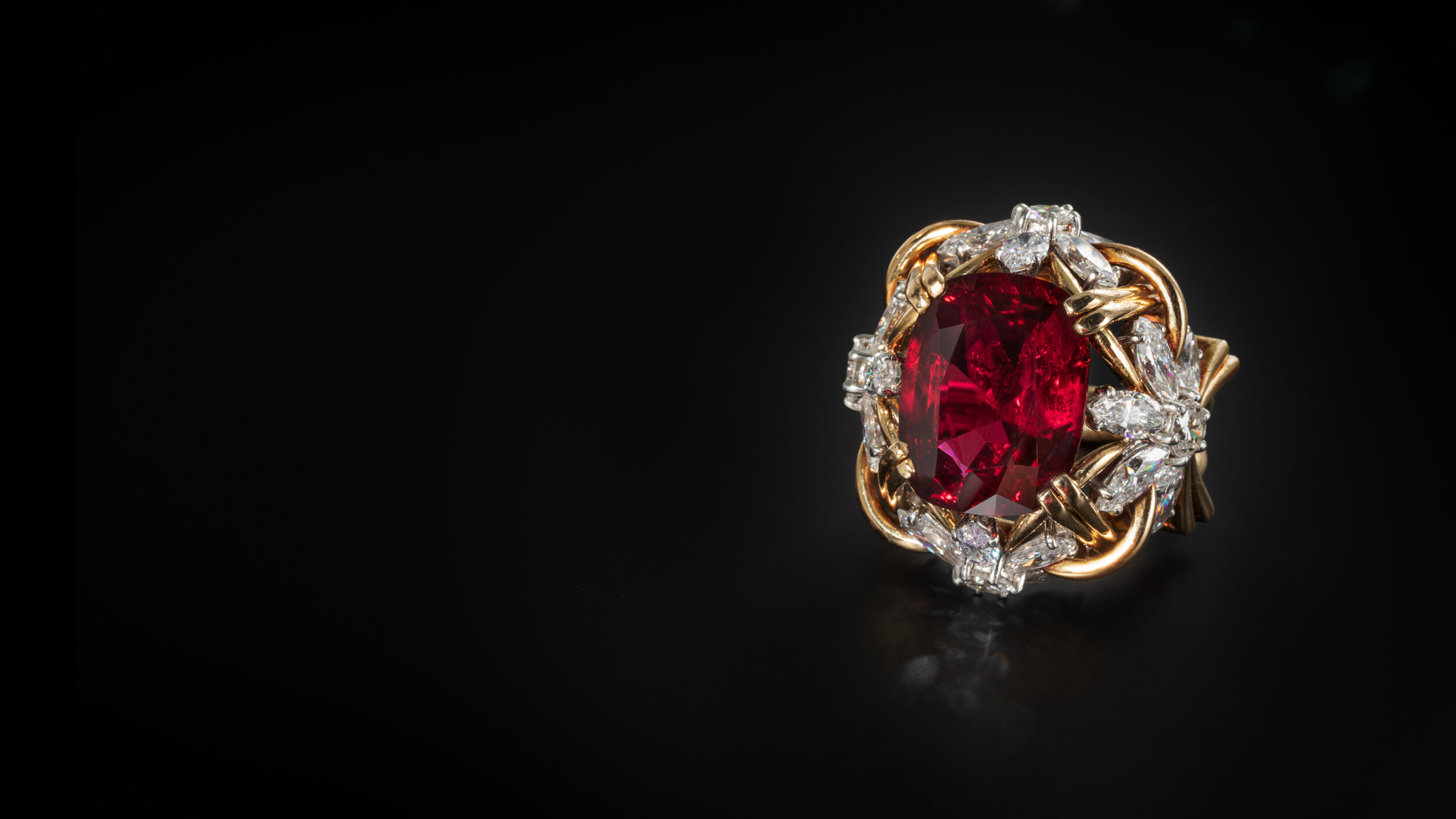Estate Jewelry: A Guide to Understanding and Appreciating Antique Jewelry Pieces
Estate Jewelry: A Guide to Understanding and Appreciating Antique Jewelry Pieces
Blog Article
Uncover the Rich History Behind Stunning Estate Fashion Jewelry Collections
The exploration of estate jewelry collections offers an one-of-a-kind window right into background, disclosing the elaborate connection in between craftsmanship and cultural advancement (estate jewelry austin). Each piece is not merely an adornment yet a testimony to the creative movements and social worths of its time, from the elaborate information of the Victorian era to the streamlined beauty of the Mid-Century Modern. As we analyze these remarkable artifacts, we reveal stories that go beyond generations, prompting us to consider not simply their beauty, however the lives they have actually touched and the minutes they have actually experienced. What tricks might these collections still hold?
The Origins of Estate Jewelry
Exactly how did estate precious jewelry come to embody the abundant history and virtuosity of past periods? The origins of estate jewelry can be traced back to numerous durations of craftsmanship, where jewelry was not merely a device yet a representation of social values, technological innovations, and creative expressions. Each item informs a tale, commonly connected with the lives of their previous proprietors, enveloping personal narratives together with historic contexts.
The term "estate fashion jewelry" commonly describes used items, typically from significant periods such as Victorian, Art Nouveau, or Art Deco. These pieces were produced with thorough focus to detail, showcasing the ability of craftsmens who utilized products like gold, silver, and priceless gemstones. Unlike modern precious jewelry, estate items typically include special layouts that highlight the aesthetic appeals of their time, hence functioning as substantial web links to the past.

Significant Design Periods
Throughout background, several remarkable design eras have actually substantially influenced the development of estate precious jewelry, each characterized by distinctive designs, products, and cultural contexts. The Georgian era (1714-1837) marked the start of detailed layouts, often including nature-inspired motifs and making use of products like gold, silver, and gemstones embeded in intricate setups. Following this, the Victorian period (1837-1901) presented enchanting styles, with emotional jewelry and innovative strategies such as the use of enamel and cameos.
The Art Nouveau duration (1890-1910) celebrated natural types and the beauty of nature, utilizing materials like opals and pearls in streaming designs. This was done well by the Art Deco era (1920-1939), which welcomed geometric patterns, vibrant colors, and elegant materials such as platinum and rubies, mirroring the modernist spirit of the moment.
The Mid-Century Modern period (1940-1960) showcased structured designs and the use of non-traditional materials, highlighting minimalism and performance. Each of these periods not only mirrors the creative activities of their time yet additionally encapsulates the social values and technical developments that shaped precious jewelry style, making them a remarkable subject for chroniclers and collectors alike.

Famous Estate Fashion Jewelry Collections
The abundant history of estate precious jewelry is wonderfully exhibited by numerous prominent collections that showcase the creativity and craftsmanship from different style periods. Among the most famous is the Cartier Collection, which reflects the luxury and technology of the iconic French jeweler. Parts from this collection frequently feature elegant gems and intricate designs, highlighting the brand's dedication straight from the source to fine craftsmanship.
One more noteworthy collection is the Lady of Windsor's precious jewelry collection, which makes up several unique pieces, including the iconic "Windsor" arm band. This collection not just exemplifies the elegance of the Art Deco duration yet likewise carries an abundant story of love and loss, as it came from Wallis Simpson, that notoriously married Edward VIII.
The collection of the late actress Elizabeth Taylor also stands apart in the realm of estate fashion jewelry. With many pieces designed by renowned jewelry experts like Bulgari and Cartier, her collection personifies glamour and sophistication, highlighting her individual design and affinity for unique gems.
These renowned estate fashion jewelry collections serve as a testimony to the long-lasting appeal of great fashion jewelry, offering insight into the creative and cultural motions that formed their production.
The Social Importance
Estate jewelry collections hold extensive social importance, reflecting not just the aesthetic worths of their corresponding eras but also the social and historic contexts in which they were produced. Each item typically symbolizes the craftsmanship and artistic fads of its time, showcasing the evolution of style and modern technology in precious jewelry making.
Additionally, these collections work as tangible web links to cultural customs and rituals. For example, wedding celebration bands and treasure brooches may signify love and familial bonds, while items adorned with specific gemstones can represent cultural or regional identities. The materials utilized-- whether gold, silver, or jewels-- commonly inform stories of profession, expedition, and the riches that site build-up of cultures.
In addition, estate precious jewelry can work as historical artefacts, providing insights right into the lives of individuals and the societal norms they browsed. The method fashion jewelry was worn and valued can disclose much about sex duties, standing, and personal expression within differing social landscapes. Thus, estate fashion jewelry goes beyond mere embellishment, serving as an abundant narrative of human experience, virtuosity, and social heritage, inviting contemporary audiences to engage with the past in a significant way.
Taking Care Of Your Estate Pieces
Caring for estate jewelry items requires a thoughtful approach to ensure their durability and protect their one-of-a-kind features. To maintain the elegance of these prizes, it is necessary to handle them with care. Constantly clean estate precious jewelry utilizing a soft, lint-free fabric after each wear to get rid of oils and dirt. For deeper cleaning, utilize a light soap remedy and a soft brush, taking care to stay clear of severe chemicals that might damage fragile products.
Storage space is similarly vital; shop pieces independently in a fabric-lined box to stop scratching and entangling. Take into consideration making use of anti-tarnish bags or cloths for silver items, as this assists to reduce the tainting process. Furthermore, prevent subjecting precious jewelry to too much dampness, severe temperature levels, or straight sunshine, which can negatively influence steels and gems.
Normal inspections are critical. Examine for loosened rocks, worn clasps, or harmed setups, and seek specialist fixings when required. Consulting a jeweler experienced in vintage or antique items can supply customized treatment options. By carrying out these methods, collectors can preserve their estate fashion jewelry's historical and visual value, guaranteeing these items remain to be treasured for generations to come.
Final Thought
To conclude, the exploration of estate jewelry collections reveals a tapestry of imaginative expression and cultural significance, reflecting the worths and appearances of numerous historical durations. When possessed them, each item offers as a testament to remarkable workmanship and the narratives of those that. Understanding the origins, design eras, and remarkable collections boosts admiration for these artifacts, highlighting their role in maintaining social heritage and encouraging continued stewardship and look after these remarkable prizes.
The expedition of estate precious jewelry collections provides an unique home window into background, exposing the complex relationship between workmanship and cultural advancement. The origins of estate precious jewelry can be mapped back to numerous durations of craftsmanship, where fashion jewelry was not just a device but a reflection of social values, technological innovations, and imaginative expressions.The term "estate jewelry" generally refers to pre-owned items, usually from substantial periods such as Victorian, Art Nouveau, or Art Deco.The abundant history of estate jewelry is wonderfully exhibited by several popular collections that display the creativity and workmanship from numerous layout ages.In final find more information thought, the expedition of estate jewelry collections exposes a tapestry of creative expression and cultural importance, reflecting the values and visual appeals of various historic durations.
Report this page